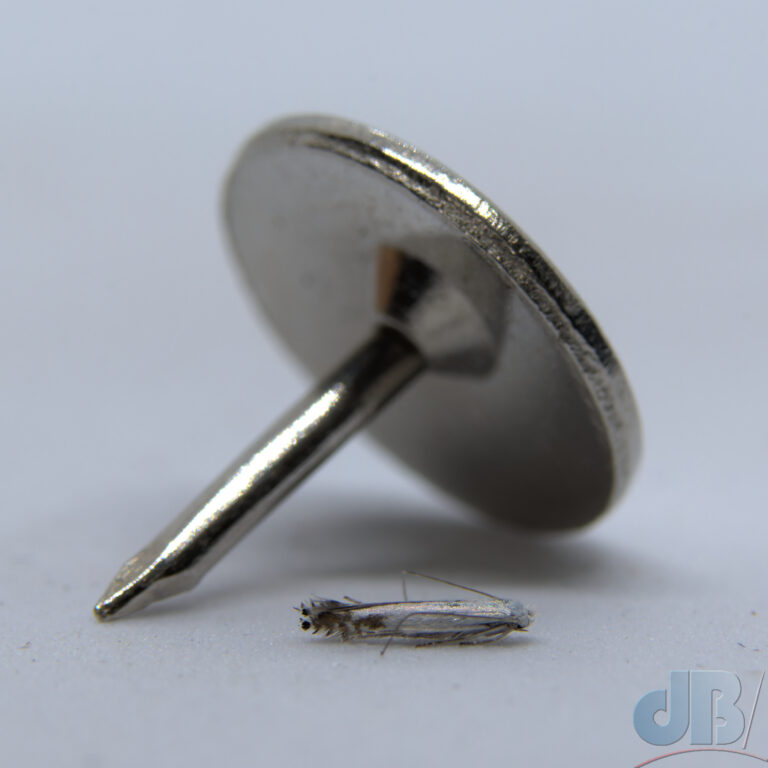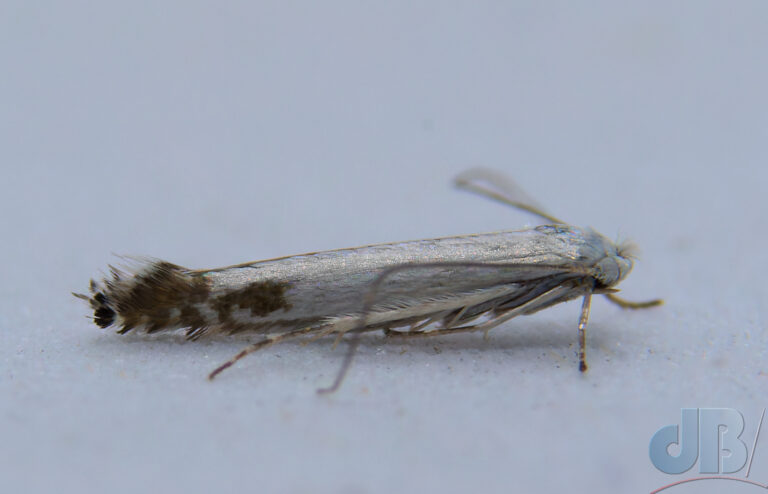The Apple Leaf Miner Moth, Lyonetia clerkella, is a tiny insect with a wingspan of just 7-9 millimetres. It is widely distributed across the UK. Its larvae burrow under the surface of the leaves of apple trees (Malus) and Prunus species. Leaving a trail through the leaf known as a leaf mine.

This species of moth is double brooded. The second or a subsequent brood will hibernate/overwinter and reappear in the spring. The adults are night flyers and attracted to light, hence my photo of one drawn to my 20W actinic Skinner moth trap last night.

Rather than using blanket pesticides on orchards, we should be studying the interaction between the moth and its natural predators or parasitoids Studying the ecological relationships in the context of the moth’s lifecycle could provide valuable insights into maintaining a balanced ecosystem within agricultural landscapes. Developing sustainable and eco-friendly approaches to managing this moth species is crucial to preserving fruit yields and at the same time ensuring the health of the wider ecosystems.
Incidentally, there was a much bigger moth drawn to the same light in the garden last night, the Red Undering, Catocala nupta. This moth’s wingspan is ten times that of L. clerkella. Only the second time I’ve seen Red Underwing in the garden, previous time was 3rd August 2019, exactly four years before this appearance!
